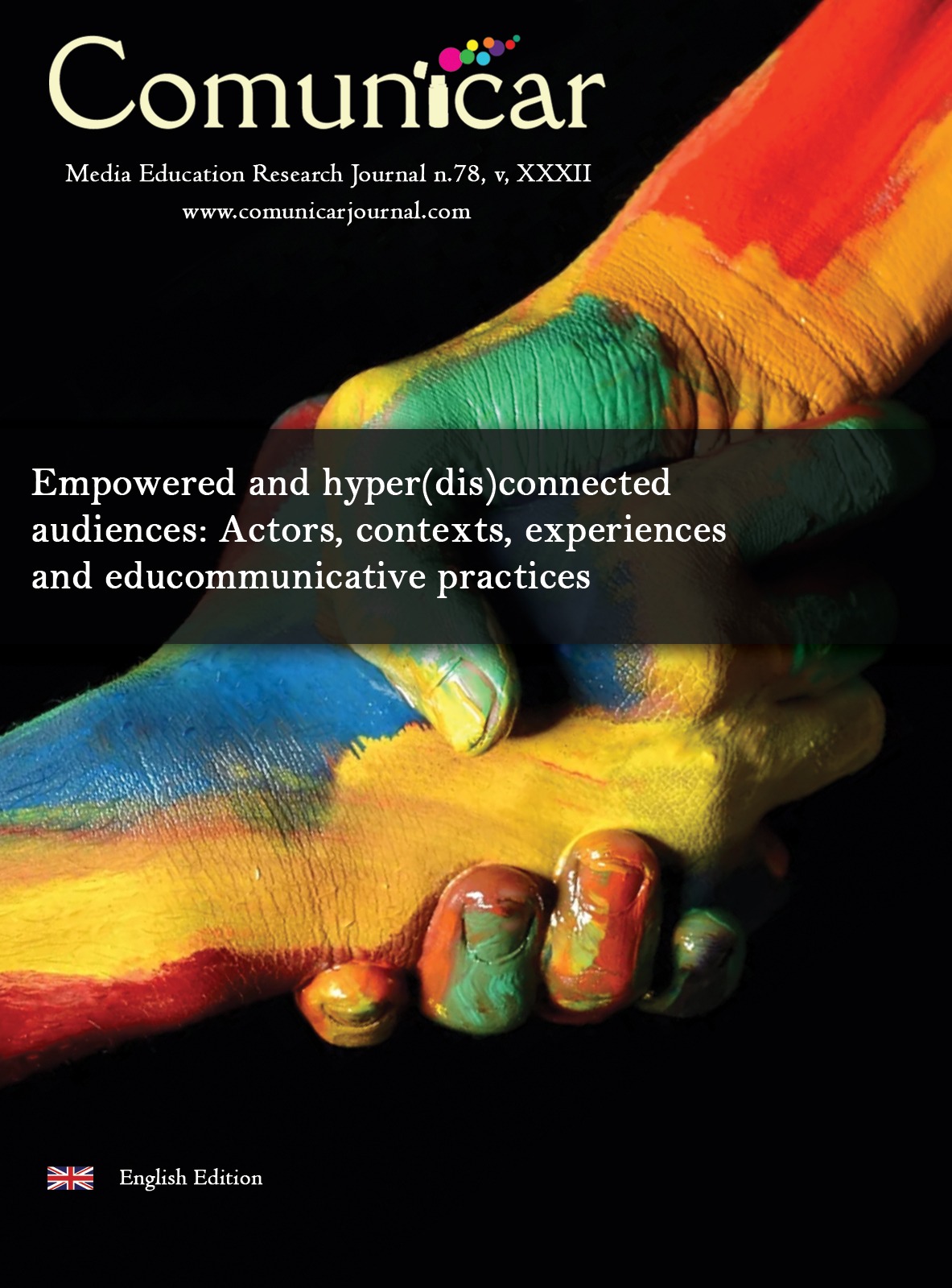Archetypes, Me Too, Time’s Up and the representation of diverse women on TV
IF 5.1
1区 文学
Q1 COMMUNICATION
引用次数: 3
Abstract
The feminist movements Me Too and Time’s Up have showcased the power of the audiovisual industry and social networks denouncing sexual harassment and promoting gender equality. Nevertheless, women in the media –and, specifically, on TV– continue to be underrepresented and stereotyped. Then, according to Time’s Up, it is urgent to increase the number of women in front of and behind the cameras, as well as to embed social movements’ influences on media productions in order to broaden the archetypal models used for characters' design/analysis. Despite the benefits of archetypes in storytelling, they are based on patriarchal and ethnocentric myths that undervalue female diversity. In response, this paper explores the transference of these feminist movements in terms of female presence and representation on TV series broadcast in the Peak TV era. From an intersectional approach, 25 feminist series were identified, and good practices in the portrayal of female characters are presented as useful role models for co-education which can contribute to egalitarian attitudes in youth. These female characters amplify typical archetypes (i.e., Knower, Carer, Striver, Conflictor, Everywomen) by defying stereotypes. This study concludes that there is a feminist trend in streaming platforms’ content, especially in series with a high female presence on-screen/off-screen (many of them linked to feminist movements), that sheds light on a more egalitarian and inclusive television landscape. Los movimientos feministas Me Too y Time’s Up han mostrado el poder de la industria audiovisual y las redes sociales para denunciar el acoso sexual y promover la equidad de género. No obstante, las mujeres en los medios –y, específicamente, en TV– siguen estando infrarrepresentadas y estereotipadas. Por ello, como señala Time's Up, es urgente aumentar la presencia femenina delante y detrás de las cámaras, así como integrar las influencias de los movimientos sociales en las producciones para ampliar los modelos arquetípicos utilizados en el diseño/análisis de personajes. A pesar de los beneficios narrativos de los arquetipos, estos se basan en mitos patriarcales y etnocéntricos que infravaloran la diversidad de las mujeres. En respuesta, este estudio explora la transferencia de los movimientos feministas a la presencia y representación femenina en las series emitidas en la era Peak TV. Desde una aproximación interseccional, se identifican 25 series feministas en Netflix y HBO y se presentan buenas prácticas de construcción de personajes femeninos útiles para la coeducación y el desarrollo de actitudes igualitarias en jóvenes. Estos amplían los arquetipos típicos (es decir, Conocedora, Cuidadora, Luchadora, Conflictiva, Cualquier mujer) y desafían los estereotipos. Se concluye una tendencia feminista en el contenido emitido en plataformas streaming, especialmente en series con alta presencia de mujeres delante/detrás de las cámaras (muchas vinculadas a movimientos feministas) que arroja luz sobre un panorama televisivo más igualitario e inclusivo.原型,我也是,时间到了,以及电视上不同女性的表现
女权运动Me Too和Time 's Up展示了音像产业和社交网络谴责性骚扰和促进性别平等的力量。然而,媒体中的妇女- -特别是电视中的妇女- -仍然没有得到充分的代表和刻板印象。然后,根据Time’s Up的说法,当务之急是增加镜头前和镜头后的女性数量,并将社会运动的影响嵌入媒体制作,以扩大用于角色设计/分析的原型模型。尽管原型在讲故事中有好处,但它们是基于男权和种族中心主义的神话,低估了女性的多样性。作为回应,本文从女性在电视高峰时期电视剧中的存在和表现来探讨这些女权主义运动的转移。从交叉的方法中,确定了25个女权主义系列,并提出了女性角色刻画的良好做法,作为男女同校的有用榜样,有助于培养青少年的平等主义态度。这些女性角色通过打破刻板印象放大了典型的原型(例如,知者、照顾者、奋斗者、冲突者、每个女人)。这项研究的结论是,流媒体平台的内容中存在一种女权主义趋势,特别是在屏幕上/屏幕下女性出现率很高的电视剧中(其中许多与女权主义运动有关),这揭示了一个更加平等和包容的电视景观。女权运动“Me Too”、“Time’s Up”、“工业运动”、“社会运动”、“性别平等运动”、“性别平等运动”等等。毫无疑问,这些人都是媒体- - - - - - - - - - - - - - - - - - - - - - - - - - - - - - - - - - - - - - - - - - - - - - - - - - - - - - - - -你好,como señala时间到了,我们的紧急会议,我们的女性会议,detrás de las cámaras, así como integrar las influencias delos movimientos sociales和las producciones para influencias modelos arquetípicos utilizados en el diseño/análisis de personajes。一个人从他的家庭中受益,从他的家庭中获益,从他的家庭中获益,从他的家庭中获益,从他的家庭中获益。在此期间,este工作室探索了女权主义运动的转移,以及representación女性主义系列的呈现。Desde una aproximación交叉的,在Netflix和HBO的25个系列中,女性主义者在Netflix和HBO的25个系列中,分别是:prácticas de construcción de personajes femeninos útiles para la coeducación和el desarrollo de actitudes igualitarien jóvenes。Estos amplían los arquetipos típicos (es decir, Conocedora, Cuidadora, Luchadora, Conflictiva, Cualquier mujer) y desafían los stereotipos。我们的结论是,我们的趋势是女性主义,我们的论点是女性主义,我们的论点是女性主义,我们的论点是女性主义,我们的论点是女性主义,我们的论点是女性主义,我们的论点是女性主义,我们的论点是女性主义,我们的论点是女性主义,我们的论点是女性主义。
本文章由计算机程序翻译,如有差异,请以英文原文为准。
求助全文
约1分钟内获得全文
求助全文
来源期刊

Comunicar
Multiple-
CiteScore
10.10
自引率
5.40%
发文量
40
审稿时长
20 weeks
期刊介绍:
Comunicar specialized in educommunication: communication and education, ICT, audiences, new languages...; monographs specialized in current issues. Double format: printed and online; digitally, accessible in full text, free of charge, for the entire scientific community and researchers around the world. Coeditions printed in Spanish and English for the whole world. Published by Oxbridge Publishing House which collaborates with many international centres and universities.
 求助内容:
求助内容: 应助结果提醒方式:
应助结果提醒方式:


